Reel to reel tape recorders: features and best models

Reel-to-reel tape recorders, considered mass production in the past, are now experiencing a rebirth, transforming into expensive, elite products. The revival of general interest in analog recording has led a number of well-known companies to resume production of reel-to-reel tape recorders.
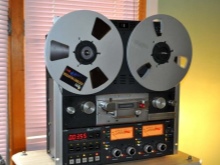
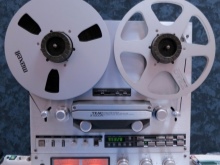
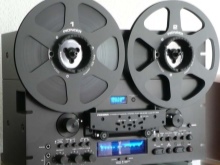
General characteristics
The first full-fledged predecessor of the reel-to-reel (reel-to-reel) tape recorder was wire device invented in 1925 K. Still. Somewhat later, magnetic tape was also patented.
The very same technology of bobbin players appeared earlier, in the 1920s. Around the same time, the design of the magnetic head was also developed, which subsequently became widespread. Its device is based on the idea of an annular magnetic core with a winding and a gap on the opposite side. The write current, passing through the winding, initiates the emergence of a magnetic field in the gap, magnetizing the carrier in accordance with the waveform. The playback process is reversed.
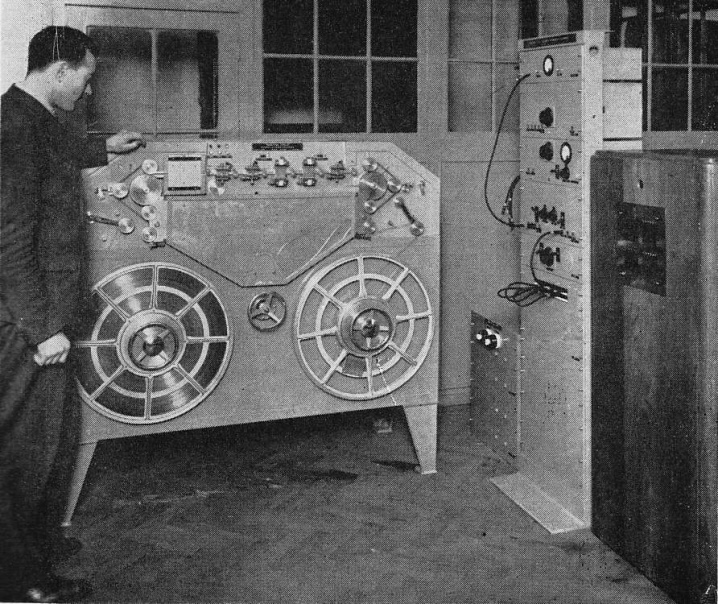
The production of the first reel-to-reel tape recorders and turntables was established in 1934-1935. German firms BASF and AEG, which held leading positions until 1945. At the end of the war, the United States and the USSR seized the initiative, borrowing the technology for the production of tape recorders from the Germans.
The main mechanical characteristics of these devices are:
- fluctuations in the speed of movement of the film from the recommended value - in percent;
- detonation index (reflects the degree of unevenness of the carrier transport speed) - in percent.
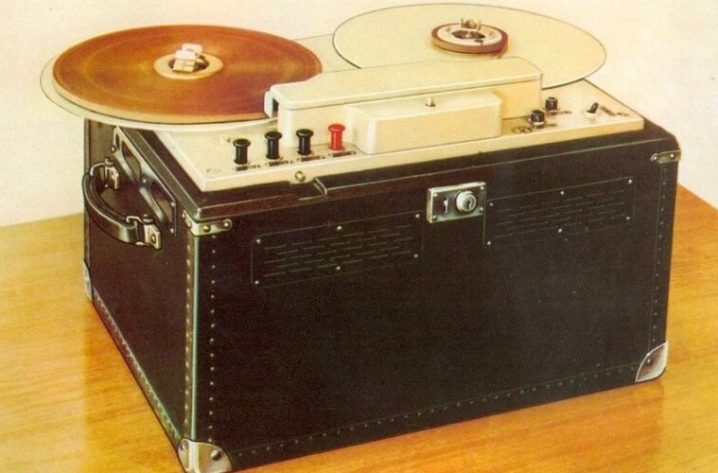
Electrical:
- signal frequency spectrum during recording - in hertz;
- the degree of unevenness of the frequency response dB;
- nonlinear distortion index (THD, THD) - in percent;
- dynamic spectrum - in dB;
- the ratio between signal and noise in dB;
- output power in watts.
Device and principle of operation
Actual units and elements of devices - tape drive mechanisms (LPM), magnetic head units (BMG, BVG), an electronic base that ensures the functionality of products, various accessories (for example, naba, etc.).
The quality of LPM functioning significantly affects the clarity of reproduction, since the distortions that a faulty node produces are practically impossible to fix. Its main characteristics are the detonation coefficient and the degree of long-term stability of the speed qualities of the conveyor belt.
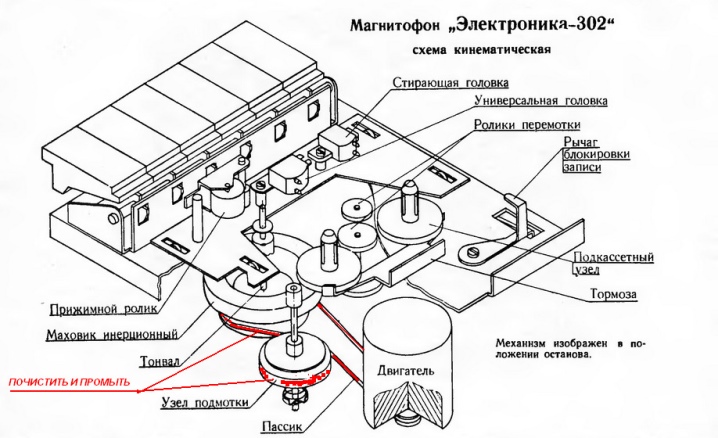
LPM is designed to provide:
- smooth working stroke;
- stable belt tension with a fixed standard force;
- high-quality and reliable contact of the film with the heads;
- high-quality work as a speed switch of the carrier (in multi-speed devices);
- fast rewinding of the tape;
- a number of additional features provided in different models, for example, hitchhiking, pause, reverse, autosearch, counter, etc.
Electric motors are used as a drive for the CVL. Possible types of torque transmissions used are belt, gear, frictional. The CVL can include from one to three electric motors, and its control can be carried out mechanically or through electronics.
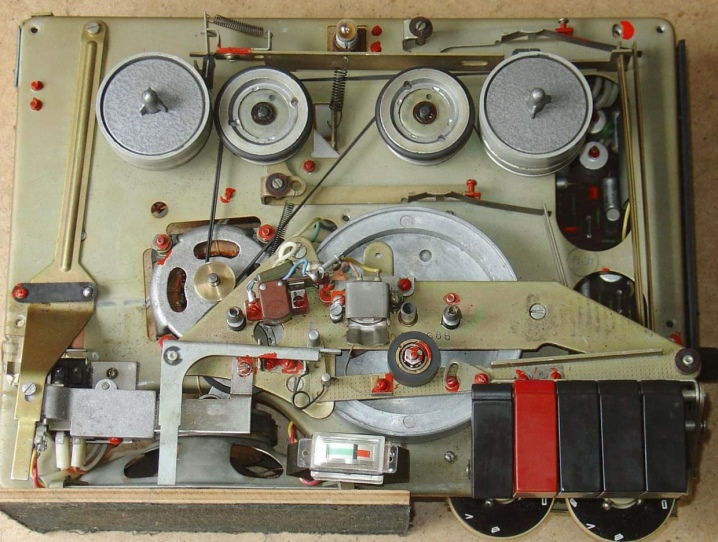
Magnetic heads are the most relevant unit of the device. They are classified by purpose: reproducing (GW), recording (GZ), universal (GU), erasing (GW). They are installed in an amount of 1-4, which is determined by the functionality of the product.In conventional models, 2 heads are mounted (GU and GS).
If there is a number of heads in one structural unit, it is called a block (BMG). Replaceable BMGs are also produced, which makes it possible to receive several tracks. Often the heads are combined (GU and GS).
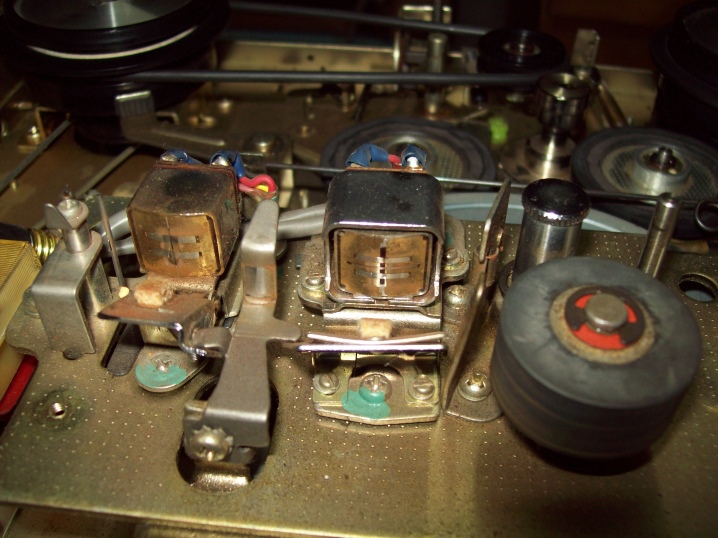
Removal of records is carried out using an alternating magnetic field, but in inexpensive versions, the fields of permanent magnets were also used, which were mechanically applied to the film. The quality of the heads used largely determined the sound quality characteristics.
The heads of the first models were made from permalloy, and then from glass ferrite. Then they were replaced by elements made of amorphous metals and magnetoresistive ones with excellent technical characteristics.

In this context, extremely actual competent standard alignment of their placement in relation to the tape. The angle of inclination of the heads to the edge of the film is especially relevant, the slightest deviations of which from the standard value strongly affect the quality of both recording and playback. In some devices, special adjustments were provided for setting the position of the heads "by ear", according to the frequency indicators of the sound of the records.
The heads must be cleaned without fail.
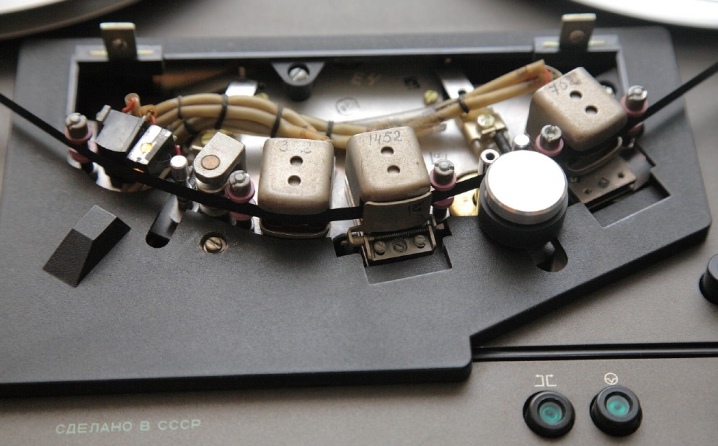
The electronic component of the device includes:
- one or more amplifiers for operating modes (UV, US), which are often combined;
- one or several low-frequency power amplifiers, acoustics are connected to their outputs;
- erase and bias generators (GSP);
- noise reduction devices (sometimes);
- electrical control circuits for LPM operation modes (sometimes);
- a number of auxiliary units (indication, switching elements, etc.).
Advanced products provide indication of the course of working processes and recording / playback levels (analog, digital), automatic search (AMS, APSS), various automatic adjustments (ARUZ), etc. in tape devices.

The element base of the products initially included lamp devices, which created a number of problems in the devices.
- The lamps were very hot, which negatively affected the film media. Therefore, in stationary devices, an electrical circuit was performed in the form of an independent unit, or special measures were provided for ventilation and thermal insulation. Wearable designs have sought to reduce the number of lamps and increase the ventilated area. The duration of the devices was also limited.
- The lamps had a microphonic effect, and the CVL created quite perceptible acoustic noises. Special design measures were taken to minimize these effects.
- To provide the lamps with voltage, a high-voltage source of anode circuits and a cathode low-voltage were required. An electric drive was also needed for the engine. In other words, small lamp devices required a solid set of batteries, which negatively affected the dimensions of the device, its weight and price.
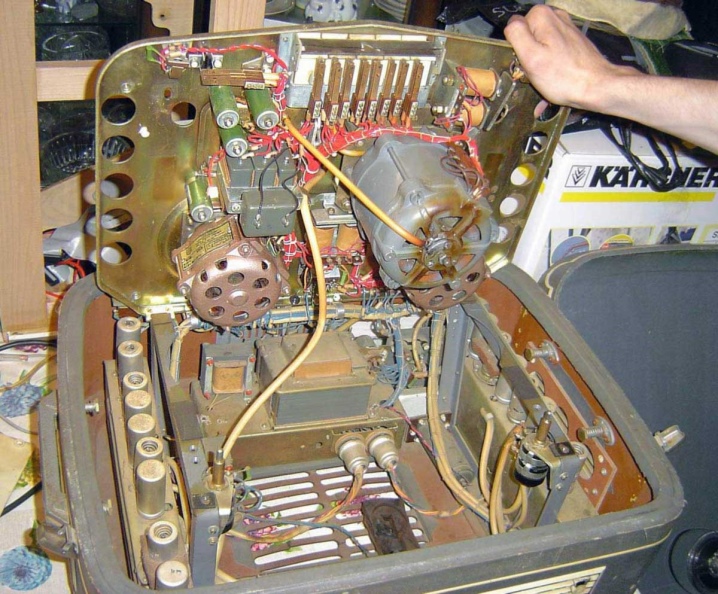
Since the 60s, with the introduction of transistors, most of the "tube" problems have been overcome. Transistor devices were now powered by inexpensive low-voltage batteries, had a longer service life, and were reduced in size.
In the 1970s. the next step was the introduction of analog integrated circuits into devices. Digital microcircuits of various levels of integration (microcontrollers, microprocessors) began to be used in control units.
The disadvantages of tape recorders include a certain bulkiness of the devices, the need for preventive measures and repairs, the high cost of the carrier and the significant size of the coils. With the right choice of the coil device, these disadvantages pay off.

Species overview
The development of production technology has led to a certain classification of the types of tape recorders.
- By types of media - on a wire, on a tape, on magnetic disks, on a cuff.
- By methods of signal registration - analog, digital.
- By applicability - for studios, household, for industry (magnetographs).
- By the amplifying devices used - full and decks.
- By the degree of mobilityused in stationary, wearable and portable forms;
- By the number of tracks - one, two, four and more tracks.
- By the number of heads installed:
- reproducing;
- 2 - the most common type;
- 3 - separate installation of specialized heads;
- 4 - with a head complementary to the playback cycle.
- By type of recording / playback - monophonic, stereophonic, multichannel, quadraphonic.
- According to the speed standard characteristics of transporting the tape during recording and playback - 76.2 cm / s (products for studios of early samples); 38.1 cm / s, 19.05 cm / s, 9.53 cm / s (for everyday life and for studios). The standard speed range of media transport appeared in the 50s. In practice, multi-speed devices are also produced. There are also machines with variable rewinding speed.
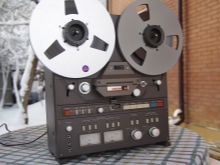
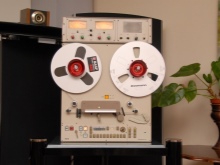

Rating of the best models
In the ranking of the best models in the world, the leading positions are taken by Japanese, German and American manufacturers. In the USSR, with rare exceptions, preference was given to copying foreign inventions, although many interesting technical ideas were developed by domestic scientists. The implementation of such ideas required significant funding and time expenditures.


Old
Of the most popular Soviet vintage tape recorders (stationary and portable), the production of which was established in the 70s, 80s and 90s, it is quite possible to single out a number of high-quality models that are not averse to purchase by modern collectors.
- "Mayak-001-stereo" - one of the first high-quality devices produced in the USSR. Created in 1973 on the basis of the Jupiter model, the tape recorder was produced by the Mayak plant in Kiev, where the first Soviet Dnepr devices were previously produced. "Mayak-001" worked as a mono and stereo device, and the components were purchased abroad.
The device won the Grand Prix at one of the international exhibitions in 1974.
Later, on its basis, "Mayak-003-stereo" with a wider frequency range was created. Then the tape recorder "Mayak-005-stereo" was released in a small series (several dozen pieces).

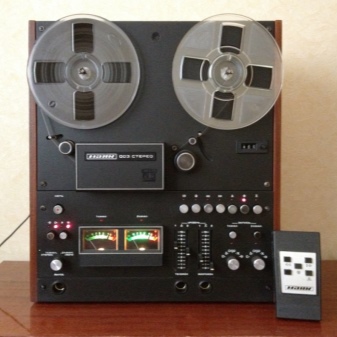
- Soundboard "Electronics-004" assembled since 1983 at the Reniy plant (Fryazino), which previously produced exclusively military equipment. The product was a relative copy of the Revox tape recorders (Switzerland). Later, the production was transferred to the enterprises of Saratov and Kiev. The frequency range of the product was in the range from 31.5 to 22000 Hz, with a film transport speed of 19.05 cm / s.
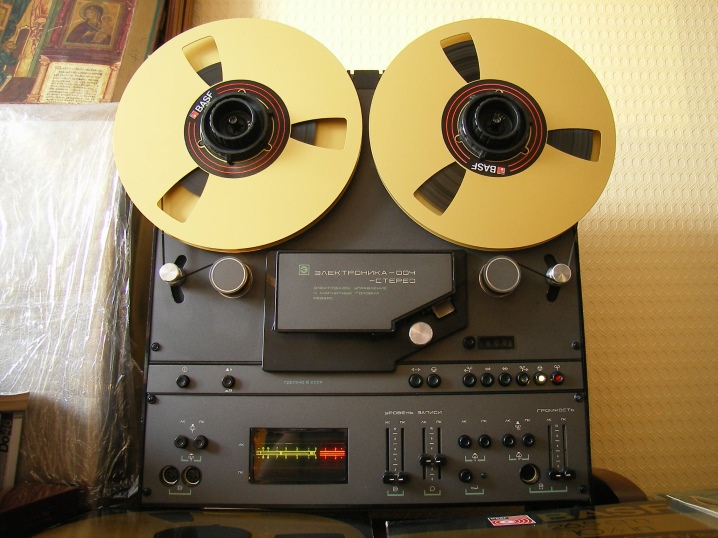
- Olympus - bobbin tape recorders produced in Kirov (PO named after Lepse). Most of the manufactured products are tape recorders. However, the most advanced model is considered to be "Olympus UR-200", designed on the basis of the "Olymp-005 stereo" model. The product had a special scope and was used by special services to record telephone conversations. "Olimp UR-200" weighed 20 kg and was a very high-quality two-speed device, with a quartz speed stabilization system, auto-correction, electronic switching on inputs, and bias current regulation.
In addition, the device had an auto-reverse, a timer, a luminescent indication and a tape counter. Of the prefixes, the best were: "Olimp-003-stereo" with four tracks and two classic speeds; "Olymp-005-stereo"; "Olimp-006-stereo" with fantastic filling and service. The Olympus models turned out to be, perhaps, the best tape recorders in the USSR.
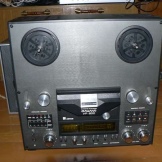
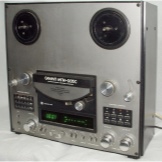
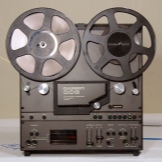

From foreign products, according to some ratings, we will single out several models.
- TEAC A-4010 - produced since 1966 by Tascam (Japan). The four-track device used seven-inch reels, had auto-rewind. About 200,000 products of this successful series have been sold. On the basis of the A-4010, the following models were created: A-4010S and A-4010SL.
The advantages of these devices are ease of use, perfect technical characteristics.
The frequency response ranged from 35 to 19,000 Hz at a film transport speed of 7½ IPS. The company produced devices until 1992.
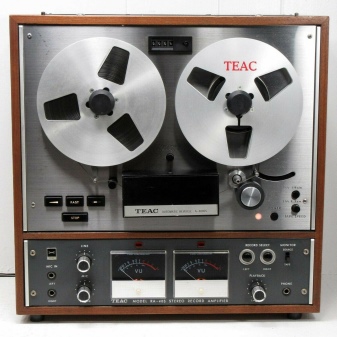

- Akai GX-77 - produced from 1981 to 1985The model is relatively inexpensive, compact, with an easy and convenient control function, excellent sound and wonderful design. Since 1985, Akai has discontinued these devices.
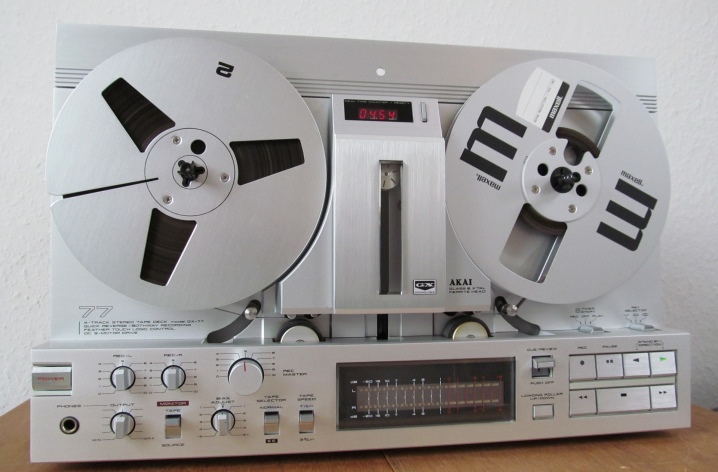
- Revox A77 0 - produced by one of the most successful firms in the production of studio equipment Studer-Revox. Stars of the first magnitude were recorded on tape recorders of this company - Bob Dylan, The Beatles, etc. In the 60s the company started producing home electronics, and part of the line was the Revox A77, released in 1967. The company sold about 150,000 of these devices. The final version of the product appeared in 1974 and was produced until 1977. In 1977, another excellent model was released - the B77.
Today these wonderful devices are sold at auctions.
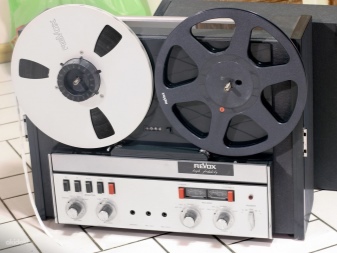
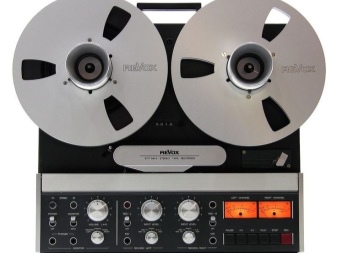
- Pioneer RT-909 - a product made in Japan. Almost all RT-909 models were produced in the export version (1978-1984). The device had the technology to control the speed of the media and sound, auto rewind and autorepeat.
The brand is popular in our time.
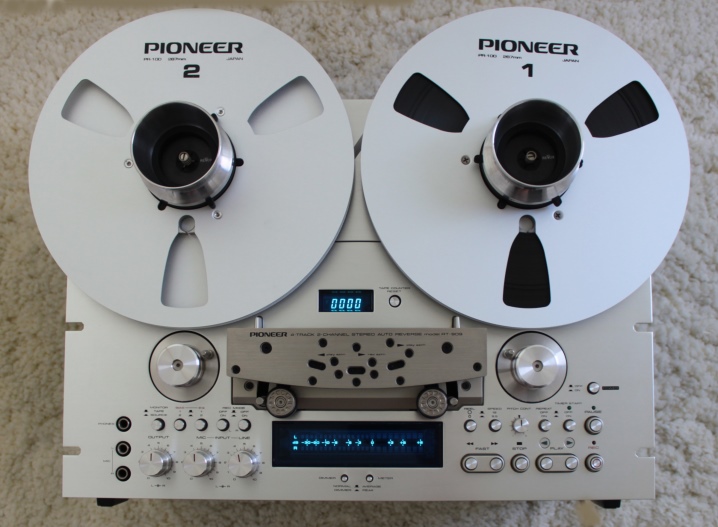
- Technics RS-1500U - one of the best models of the well-known Japanese company Technics, released in 1976. The product is of high value - at the time of release, its cost was up to $ 1500. The model is three-speed (9, 19 and 38 cm / s) and is still popular.
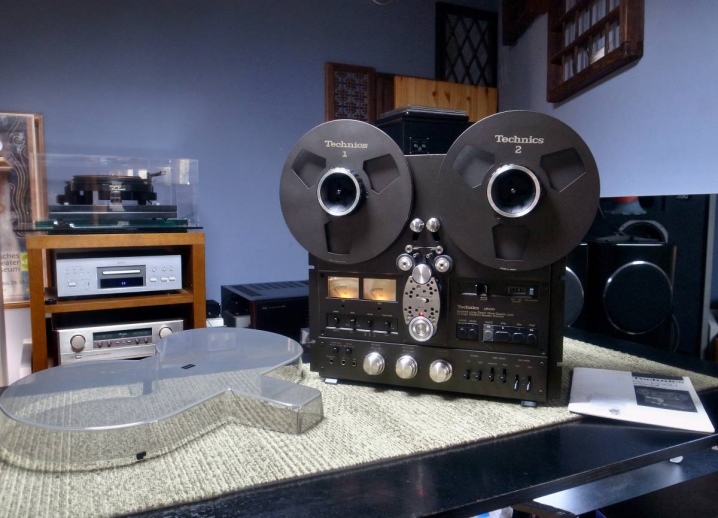
- Sony TC-880-2 - a technically advanced device, produced since 1974, with a carrier transport speed of 19 and 38 cm / s. Frequency spectrum up to 40 kHz (at highest speed). Performed with accurate indication of volume levels, track synchronization, phase compensation. Nowadays, this product is difficult to find, since it was extremely expensive. So, in 1979, its price reached $ 2500 (now it is about $ 8600).
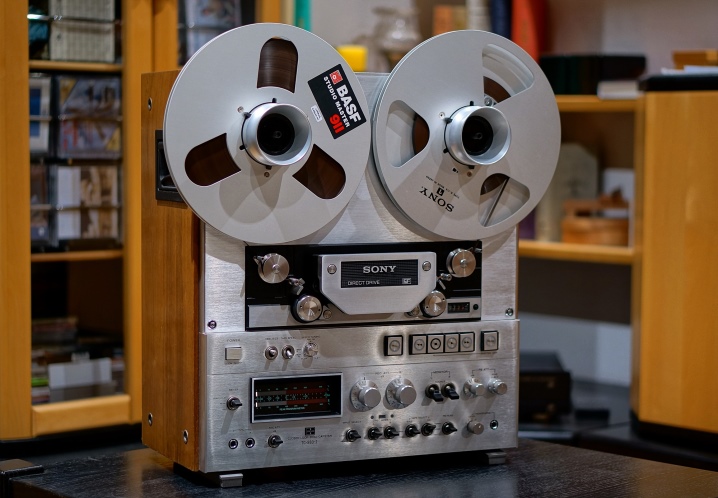
Modern
Nowadays, new collections of reel-to-reel machines are being produced, which will certainly be of interest to sophisticated amateurs and connoisseurs. A few examples.
- Ballfinger M 063 H1 - a line from a German company. This is the most common model that operates with two-track tape. Belt driven model. No amplifier. With aluminum body and impeccable CVL.

- Ballfinger M 063 H3 - model of the same company. Similar to the previous model, it is made with a belt drive, with an additional recording function. Provides indication of recording levels. The device has two brushless motors with a microprocessor control unit, as well as three stepper motors responsible for braking mechanics and head locking. Improved and expensive model - Ballfinger M 063 H5.
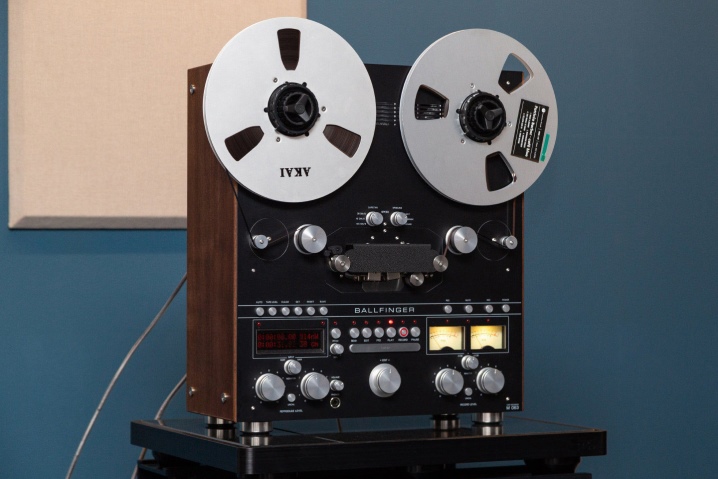
- Uha-HQ Phase 10 - device of the American company Uha-HQ. There is a full line of models with different functionality and cost. Each model corresponds to an original and solid list of technical options. The basic Phase 10 model is distinguished by the full functionality of the device, a developed indicative system and control. A special feature is an excellent preamplifier.
A more advanced device in this class is the Uha-HQ ULTIMA4 model, equipped with a head developed by the company.
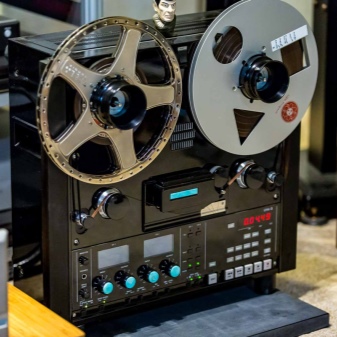
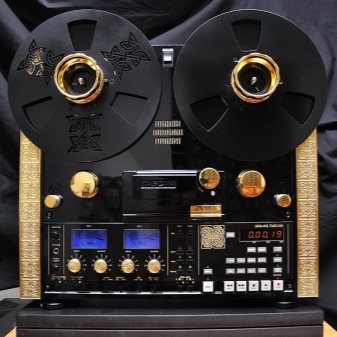
- J-Corder - The company is engaged in the restoration of famous brands of vintage tape recorders Technics and Pioneer, offering a wide range of options for their technical and design upgrades. The quality of workmanship is guaranteed by the image of the main firms.

- Renowned firm Thorens, increasing the production of analogue audio devices, together with Ballfinger produces the reel-to-reel, two-track model TM 1600, first shown recently at the Munich exhibition. The highlight of this reproducing model is Ballfinger's newest, small size CVL with 3 motors. The device implements CCIR and NAB equalizations, as well as an external voltage source that reduces noise.
The launch of the first batch is expected in 2020.
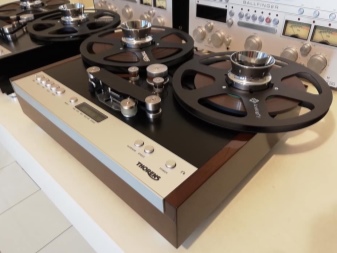
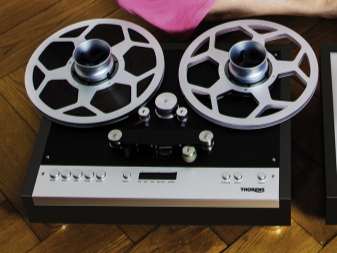
Selection Tips
When choosing devices, you should:
- evaluate the appearance of the device;
- check the level of wear of the heads and CVLs, carefully inspecting all units, rings and rollers with a magnifying glass;
- assess the degree of suitability of the drive tilt, checking the lubrication and the condition of the backlashes on it;
- check the operation of the device in all modes;
- evaluate the smoothness of the CVL operation;
- check for the possible presence of unnecessary mechanical noises and sounds during operation;
- having opened the device, make a thorough internal inspection of it for extraneous influences on mechanical components and electronics;
- check the condition of the belts.
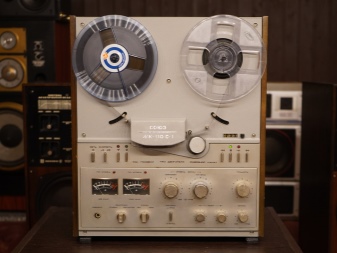
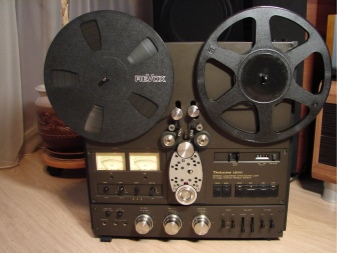
Customization
Correctly setting up a reel-to-reel tape recorder is not an easy task, requiring specific knowledge and skills. Amateurs are advised to return the device for tuning to a specialized licensed workshop. In general, a step-by-step setup process might look like this:
- cleaning the path of the belt and demagnetizing the CVL elements in contact with it;
- equalization of input and output voltages when the signal passes through the path;
- reproduction of the calibration tape;
- setting the azimuth of the playback head;
- playback of 1 and 10 khz calibration signals and their adjustment;
- installation of a reel with a new tape on the device;
- adjustment of the azimuth of the recording head;
- adjustment of bias by recording on a new tape with a frequency of 10 khz from a generator;
- setting up the recording directly.
Next you will find an overview of the MPK-005 "Olympus" reel-to-reel tape recorder.













The comment was sent successfully.